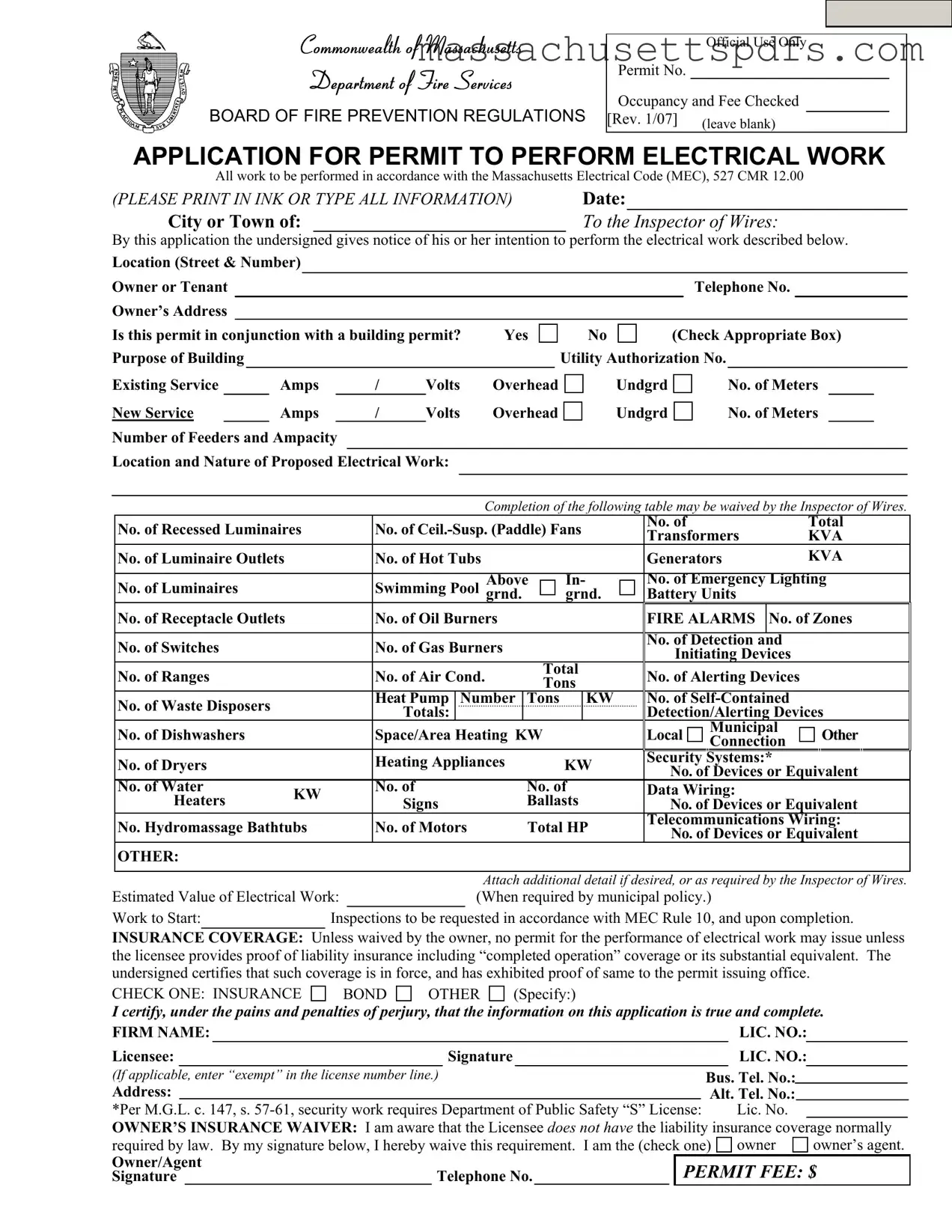Official Massachusetts Permit Electrical Template
The Massachusetts Permit Electrical form is a crucial document required for individuals or businesses intending to perform electrical work within the state. This application ensures compliance with the Massachusetts Electrical Code and provides necessary information about the project, including the scope of work and safety measures. To begin your electrical project, please fill out the form by clicking the button below.
Launch Editor Here
